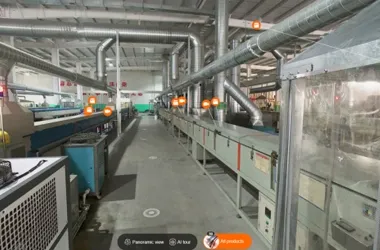flat rubber seal strip
The Importance and Applications of Flat Rubber Seal Strips
Flat rubber seal strips are essential components in various industries, serving a multitude of purposes related to sealing and insulation. These versatile products are designed to provide a reliable barrier against environmental factors such as air, water, dust, and noise. As we delve deeper into the characteristics, benefits, and applications of flat rubber seal strips, their significance in modern manufacturing and construction becomes increasingly evident.
Characteristics of Flat Rubber Seal Strips
Flat rubber seal strips are typically made from high-quality rubber materials, such as EPDM (ethylene propylene diene monomer), neoprene, or silicone. The choice of material is crucial as it determines the strip's durability, flexibility, and resistance to various external factors. For example, EPDM is well-known for its excellent resistance to UV rays, ozone, and extreme temperatures, making it suitable for outdoor applications. Neoprene offers good resistance to chemicals and oils, while silicone provides high-temperature resistance and flexibility.
The design of flat rubber seal strips often features a flat profile, allowing them to fit seamlessly into grooves or gaps. This design enhances the strip's ability to create a tight seal when compressed, preventing unwanted leakage or infiltration. The width and thickness of these strips can vary, providing options suitable for different sealing needs.
Benefits of Using Flat Rubber Seal Strips
One of the primary benefits of flat rubber seal strips is their ability to improve energy efficiency. In residential and commercial buildings, these seals can be installed around doors and windows to minimize air leakage, thereby reducing heating and cooling costs. By creating a tight seal, flat rubber strips prevent drafts, ensuring a more comfortable indoor atmosphere while lowering energy bills.
Another significant advantage is their ability to provide sound insulation. Flat rubber seal strips can be installed in walls, ceilings, and floors to help dampen noise transmission between spaces. This feature is particularly valuable in hotels, offices, and residential buildings where noise control is a priority.
Moreover, these seal strips contribute to the longevity of mechanical systems. For example, in automotive and industrial applications, using flat rubber seals can protect crucial components from contaminants like dust and moisture, leading to prolonged equipment life and reduced maintenance costs.
flat rubber seal strip

Applications of Flat Rubber Seal Strips
Flat rubber seal strips find applications across a wide range of industries
1. Construction and Building In the construction sector, flat rubber seal strips are commonly used around windows, doors, and ventilation systems. They help improve energy efficiency by preventing air and water leaks while also offering noise insulation.
2. Automotive In the automotive industry, flat rubber seals are used in various applications such as door seals, trunk seals, and window seals. They play a crucial role in ensuring a tight fit that prevents water ingress and reduces road noise.
3. HVAC Systems Flat rubber seal strips are essential in heating, ventilation, and air conditioning systems. They are used to seal ducts and prevent air leakage, which can significantly affect system performance and energy efficiency.
4. Electronics In the electronics industry, these seal strips are used to protect sensitive components from moisture and dust. This protection is vital for maintaining the performance and reliability of electronic devices.
5. Furniture and Appliances Flat rubber seals are also used in appliances like refrigerators, ovens, and dishwashers to create airtight seals. This prevents energy loss and enhances the efficiency of these devices.
Conclusion
In conclusion, flat rubber seal strips are invaluable components across multiple industries, delivering a host of benefits encompassing energy efficiency, noise reduction, and mechanical protection. As the demand for more efficient and durable sealing solutions continues to grow, the role of flat rubber seal strips will only become more prominent. By choosing the right material and design for specific applications, manufacturers and consumers alike can ensure optimal performance and longevity, reinforcing the significance of these seemingly simple yet vital products in our everyday lives. Whether in construction, automotive, or electronics, flat rubber seal strips provide essential support, illustrating the crucial intersection of materials science and practical application.
-
Under Door Draught Stopper: Essential ProtectionNewsJul.31,2025
-
Garage Door Seal and Weatherstrips for ProtectionNewsJul.31,2025
-
Edge Banding Tape for Perfect EdgesNewsJul.31,2025
-
Table Corner Guards and Wall Corner ProtectorsNewsJul.31,2025
-
Stair Nose Edging Trim and Tile Stair SolutionsNewsJul.31,2025
-
Truck Bed Rubber Mats for Pickup BedsNewsJul.31,2025
-
Window Weather Stripping for Noise ReductionNewsJul.29,2025